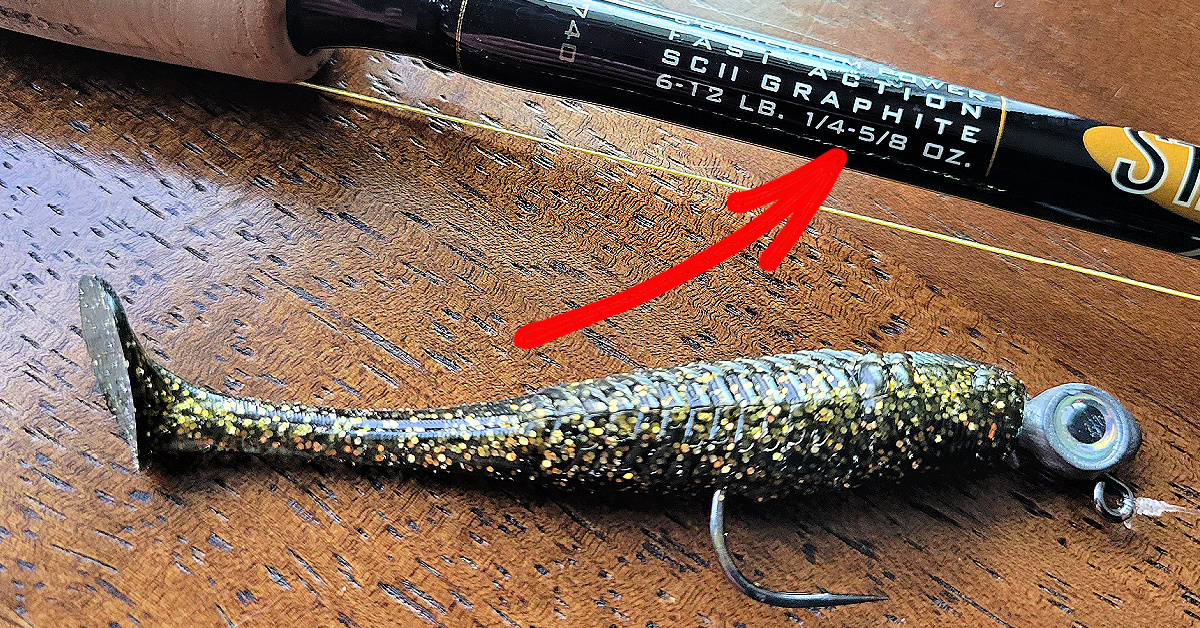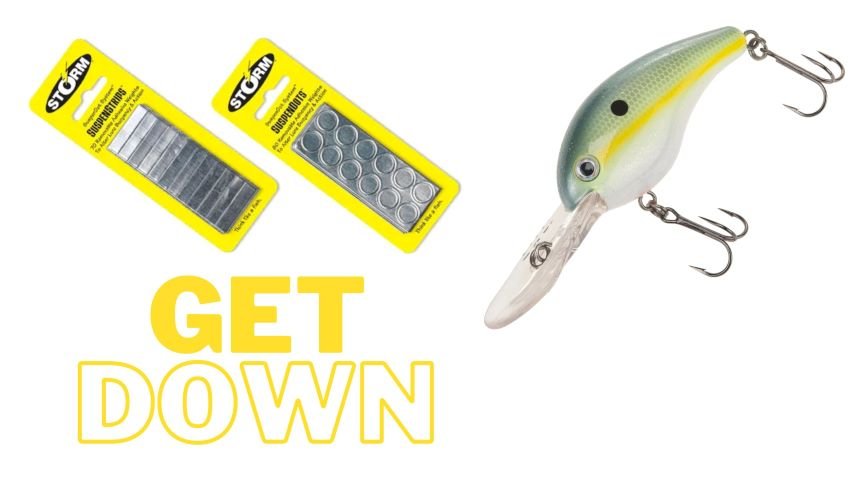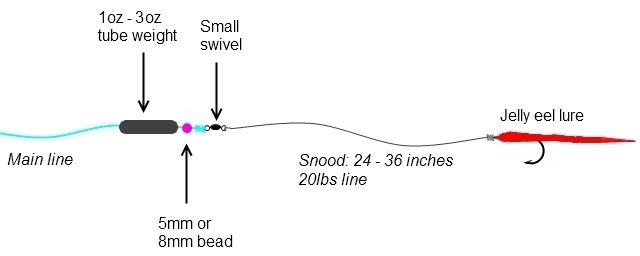Fishing lures do not always need weights. Some lures are designed to work without additional weight.
Fishing lures come in various designs and purposes. They mimic the movement of fish or other prey to attract catches. Some lures, like crankbaits and topwater lures, work effectively on their own. Other lures, like soft plastics, may benefit from added weights to sink faster or reach deeper waters.
Weights can help control the lure’s depth and movement, making it more appealing to fish. Anglers should consider the type of lure and fishing conditions to decide if weights are necessary. Experimenting with different setups can lead to better fishing success.
Introduction To Fishing Lures
Fishing lures are artificial baits designed to attract fish. They mimic the appearance and movements of prey. Anglers use lures to catch various fish species. The effectiveness of a lure depends on its type and design.
Types Of Lures
There are many types of fishing lures, each serving a specific purpose. The most common types include:
- Spinnerbaits: These lures have a spinning blade that creates vibrations.
- Spoon Lures: Shaped like a spoon, they wobble to imitate fish movements.
- Jigs: These have weighted heads and are ideal for vertical fishing.
- Soft Plastics: Made of soft rubber, they mimic worms and other creatures.
- Topwater Lures: Float on the surface and create splashes to attract fish.
Purpose Of Lures
The main purpose of lures is to attract fish. Lures can resemble small fish, insects, or other prey.
They use color, vibration, and movement to entice fish to bite. Some lures are designed for specific water depths. Others are meant for particular fish species.
Using the right lure can increase your chances of a successful catch.

Credit: www.saltstrong.com
Role Of Weights In Fishing
The role of weights in fishing is crucial for a successful catch. Weights help control the depth and stability of fishing lures. They enhance the lure’s performance and ensure it reaches the desired fishing spot.
Why Use Weights?
Using weights in fishing can offer several benefits:
- Depth Control: Weights help the lure sink to the desired depth.
- Stability: They provide stability in strong currents or windy conditions.
- Longer Casts: Weights allow for longer and more accurate casts.
Types Of Weights
There are various types of weights used in fishing. Each type serves a specific purpose.
| Type | Usage |
|---|---|
| Split Shot | Small, versatile weights. Perfect for light tackle fishing. |
| Egg Sinkers | Oval-shaped weights. Ideal for bottom fishing. |
| Bullet Weights | Used for worm rigs. Allow smooth movement through vegetation. |
| Bank Sinkers | Heavy weights. Suitable for deep-water fishing. |
Lure And Weight Compatibility
Fishing lures come in many shapes and sizes. The right weight can enhance their performance. Picking the correct lure and weight combination is essential. This can improve your fishing experience significantly.
Matching Lures And Weights
Different lures require different weights. A lightweight lure can be paired with a small weight. This helps the lure move naturally in the water. A heavy lure often needs a larger weight. This helps it sink faster and reach deeper fish.
Here is a table to help you match lures with weights:
| Lure Type | Recommended Weight |
|---|---|
| Spinnerbait | 1/4 oz to 1 oz |
| Crankbait | 1/8 oz to 3/4 oz |
| Jig | 1/16 oz to 2 oz |
| Soft Plastic | 1/32 oz to 1/4 oz |
Impact On Casting
Weights affect how far you can cast a lure. Light lures without weights do not cast far. Adding a weight helps increase the distance.
Here are some tips for casting with weights:
- Use a light weight for short casts.
- Use a medium weight for moderate distances.
- Use a heavy weight for long casts.
A proper weight also helps control the lure’s movement. It can make the lure look more realistic in the water. This attracts more fish and improves your chances of a catch.

Credit: www.halfpastfirstcast.com
Benefits Of Using Weights
Fishing lures can be more effective with weights. Weights provide multiple benefits. They help both beginners and experienced anglers. Let’s explore the benefits in detail.
Enhanced Casting Distance
Using weights can significantly improve your casting distance. Weights add extra momentum to your lure. This helps you reach deeper or farther areas. Longer casts mean you can target fish hiding far away. This can be crucial in large water bodies.
| Without Weights | With Weights |
|---|---|
| Short casting distance | Longer casting distance |
| Limited reach | Extended reach |
Improved Lure Action
Weights can enhance the action of your lure. They help your lure move more naturally. This increased realism can attract more fish. Different weights can create different actions. Experiment with various weights for best results.
- Creates natural movement
- Attracts more fish
- Allows for versatile fishing techniques
Using weights can make your fishing experience more productive. They help you reach farther and mimic real fish movements. Try adding weights to your lures today.
Situations Requiring Weights
Fishing lures often need weights in various situations. Weights can help lures sink faster and stay stable. This is crucial in certain fishing conditions.
Deep Water Fishing
Fishing in deep water requires weights. Lures without weights may not reach the desired depth. Weights help lures sink quickly. They also keep the lure at the right level. This is essential for catching deep-water fish.
Here are some reasons why weights are needed in deep water:
- Reaching the correct depth: Weights ensure the lure gets deep enough.
- Stability: Weights keep the lure steady in deep water.
- Attracting fish: Deep-water fish are attracted to lures at their level.
Strong Currents
Fishing in strong currents can be challenging. Weights are crucial in these conditions. They help keep lures in place. Without weights, lures may drift away.
Here are some benefits of using weights in strong currents:
- Control: Weights provide better control over the lure.
- Stability: Weights keep the lure stable in moving water.
- Accuracy: Weights help place the lure where fish are biting.
Using weights in strong currents ensures a successful fishing trip. Anglers can catch more fish with the right setup.

Credit: m.youtube.com
Expert Angler Opinions
Fishing lures come in many shapes and sizes. Many anglers wonder if weights are needed. Expert anglers have different opinions on this topic. Some say weights are essential. Others say they are optional. Let’s explore their thoughts.
Pro Angler Tips
Pro anglers often use weights with their fishing lures. Weights help the lure sink. This is important for catching fish at different depths. Here are some tips from pro anglers:
- Use a weight if fishing in deep water.
- Choose a light weight for shallow water.
- Experiment with different weights to find what works best.
Pro anglers suggest using weights for better control. Weights can also help in casting. A weighted lure can travel farther. This is useful in large lakes or rivers.
Common Mistakes
Many beginners make mistakes with fishing weights. Here are some common mistakes to avoid:
| Mistake | Explanation |
|---|---|
| Using too much weight | This makes the lure sink too fast. Fish may not bite. |
| Not using any weight | The lure may not reach the desired depth. |
| Wrong weight size | Choose a weight suitable for the lure size and water depth. |
Avoiding these mistakes can improve your fishing experience. Always match the weight to your fishing conditions. This helps in catching more fish.
Alternative Techniques
Fishing with lures often involves using weights to get the right depth. But, some anglers prefer alternative techniques. These methods can be just as effective. Let’s explore some of these.
Weightless Fishing
Weightless fishing means using lures without any added weights. This approach works well in shallow waters. The lure moves naturally, attracting fish more effectively. Use a slow, steady retrieve to mimic prey.
| Pros | Cons |
|---|---|
| Natural movement | Limited depth range |
| Less chance of snagging | Harder to cast long distances |
Natural Bait Options
Using natural bait is another effective technique. Worms, minnows, and crickets are great choices. These baits can be used without weights. Fish are often more attracted to natural prey.
- Worms: Easy to find and use.
- Minnows: Ideal for catching larger fish.
- Crickets: Perfect for surface fishing.
Natural bait moves in a way that artificial lures can’t. This makes it a valuable option for many anglers. Ensure your bait is alive and lively for the best results.
Experiment with these alternative techniques. You might find them more effective in certain situations. Happy fishing!
Frequently Asked Questions
Do Fishing Lures Need Weights?
Fishing lures often need weights to reach desired depths. Weights help control the lure’s movement and mimic natural prey.
What Types Of Weights Work With Fishing Lures?
Different types of weights include split shot, bullet, and egg sinkers. Choose based on your fishing conditions and target species.
How Do Weights Affect Lure Performance?
Weights improve casting distance and control lure depth. They help in presenting the lure naturally to attract fish effectively.
Can I Fish Without Using Weights?
Yes, you can fish without weights in shallow waters. However, weights improve lure effectiveness in deeper and faster-moving waters.
Conclusion
Choosing the right fishing lure weight can enhance your fishing experience. It helps in casting distance and lure depth. Experiment with different weights to find what works best for you. Remember, the right weight depends on the fishing environment and target species.
Happy fishing and tight lines!

